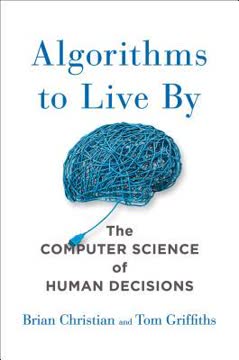Searching...
Top 10 Books on Fuzzy Logic and Its Applications
Explore the 10 best books on fuzzy logic and its applications, perfect for students, professionals, and enthusiasts looking to deepen their understanding.
Book Summaries
The Computer Science of Human Decisions
Brian Christian explores how computer science principles can enhance decision-making, making it a perfect fit for those interested in the applications of fuzzy logic.
3 Key Takeaways:
- Optimal Stopping: When to Commit in Life's Decisions
- Explore vs. Exploit: Balancing New Experiences and Favorites
- Sorting: The Power and Limitations of Organizing Information
A Handbook of Agile Software Craftsmanship
Robert C. Martin, a leading software engineer, provides essential principles for writing maintainable code, which is crucial for implementing fuzzy logic in software development.
3 Key Takeaways:
- Write clean code that is readable and maintainable
- Follow meaningful naming conventions
- Keep functions small and focused
Making Smarter Decisions When You Don't Have All the Facts
Annie Duke, a decision-making expert, provides insights into uncertainty and risk, which are essential concepts in fuzzy logic applications.
3 Key Takeaways:
- Life is more like poker than chess: embrace uncertainty
- Our beliefs shape our decisions, but they're often flawed
- Resulting: the dangerous habit of judging decisions by outcomes
Robert C. Martin's insights into software architecture emphasize the importance of flexibility and maintainability, aligning with fuzzy logic's adaptability in system design.
3 Key Takeaways:
- Software architecture is about minimizing human resources and maximizing productivity
- Clean architecture separates business rules from external details
- SOLID principles guide the creation of flexible, maintainable systems
What It Is, Why It Seems Scarce, Why It Matters
Steven Pinker, a renowned cognitive scientist, delves into the nature of rationality, providing insights that are crucial for understanding fuzzy logic's role in decision-making.
3 Key Takeaways:
- Rationality is the ability to use knowledge to attain goals
- Humans are capable of both rational and irrational thinking
- Logic and critical thinking are essential tools for rationality
John Ousterhout, a renowned computer scientist, offers insights into managing complexity in software design, which resonates with the principles of fuzzy logic in creating adaptable systems.
3 Key Takeaways:
- Complexity is the root of software design challenges
- Strategic programming trumps tactical approaches
- Modules should be deep, not shallow
Erika Hall's practical approach to research emphasizes the importance of understanding user needs, which is essential for applying fuzzy logic in design.
3 Key Takeaways:
- Research is critical thinking, not just data collection
- Define clear objectives before starting any research
- Organizational research is crucial for project success
Eugenia Cheng, a mathematician and educator, presents a compelling exploration of logic's role in understanding complex systems, making it a valuable read for those interested in fuzzy logic applications.
3 Key Takeaways:
- Logic is the foundation for clear thinking and understanding
- Abstraction allows us to apply logic to real-world situations
- Blame and responsibility are often more complex than they appear
New Directions for Designing Interactive Systems
Jef Raskin, a pioneer in human-computer interaction, emphasizes the importance of user-centered design, which aligns with fuzzy logic principles in creating intuitive systems.
3 Key Takeaways:
- Modes are the root of many interface problems and should be eliminated
- Visibility is crucial: Make interface elements and their functions clearly apparent
- Habituation is powerful: Design interfaces that allow beneficial habits to form












